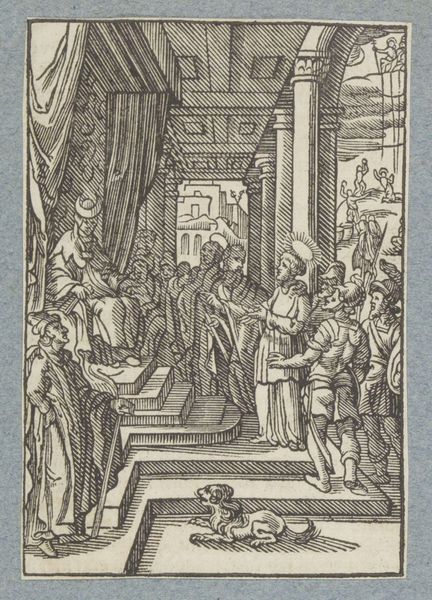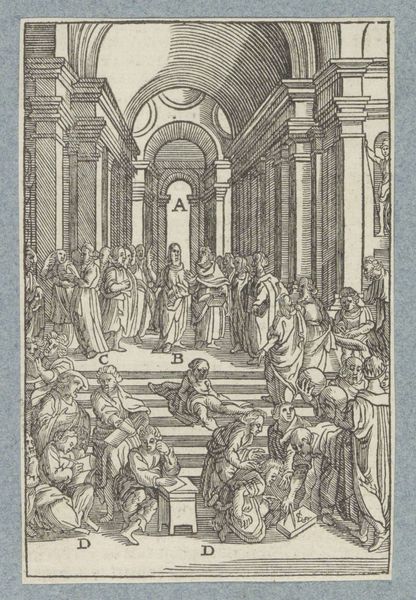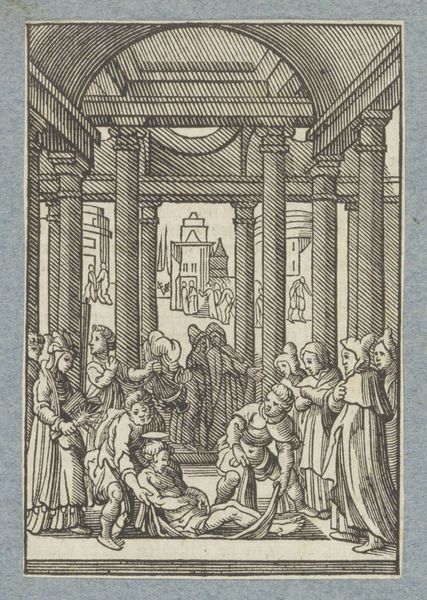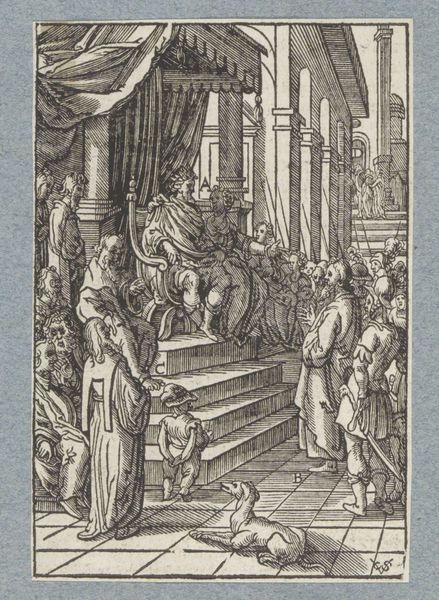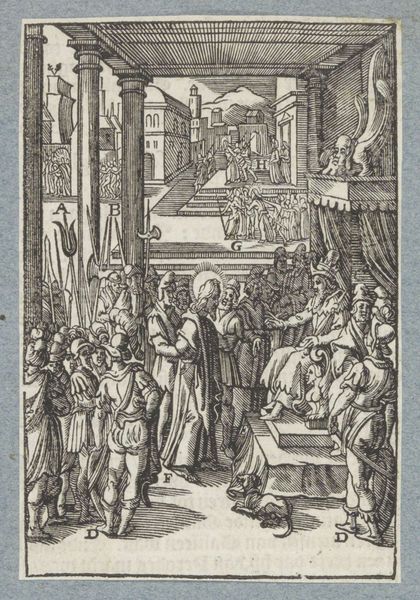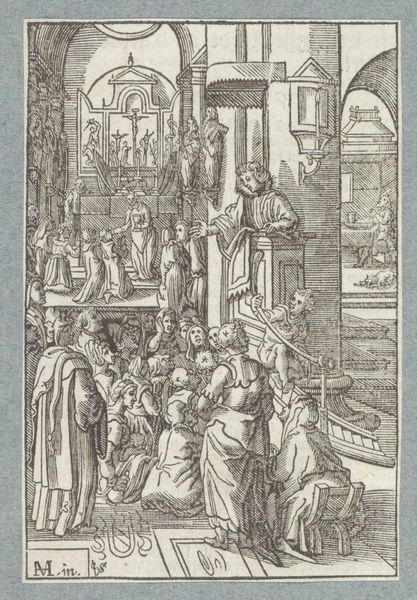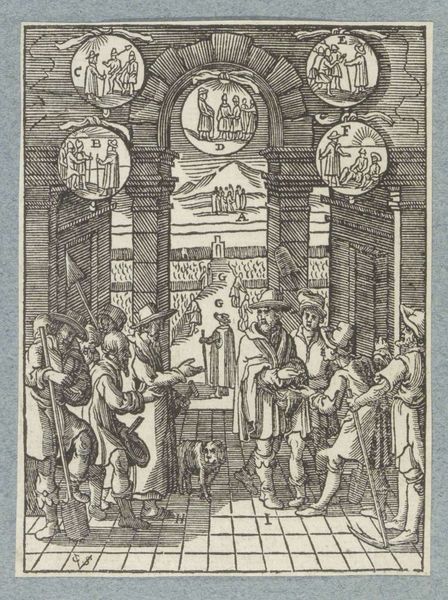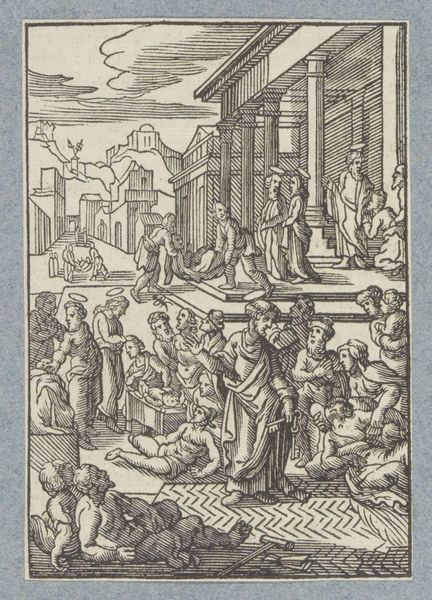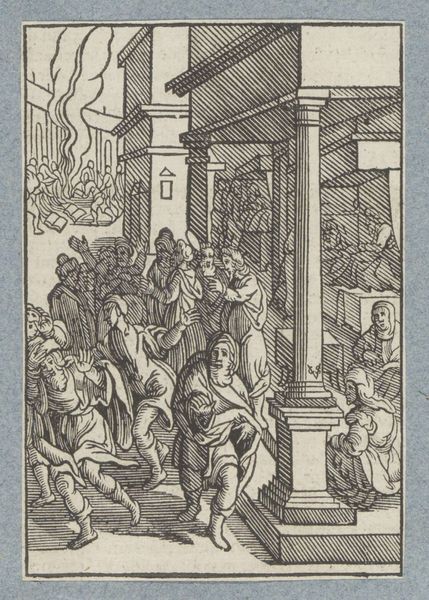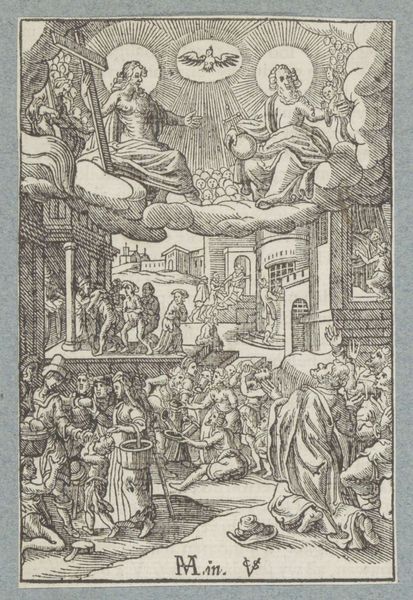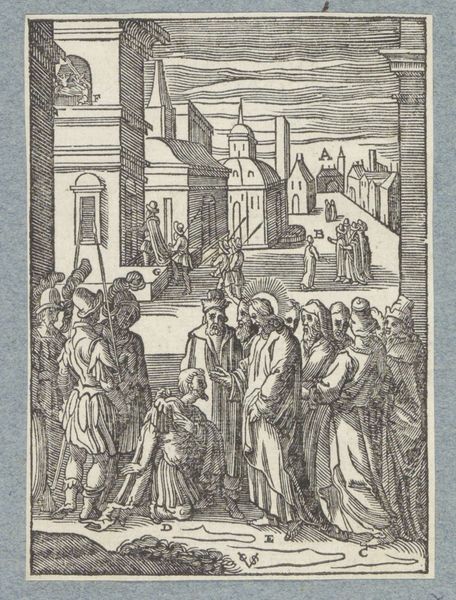
print, intaglio, engraving
#
narrative-art
#
baroque
# print
#
intaglio
#
figuration
#
history-painting
#
engraving
Dimensions: height 111 mm, width 75 mm
Copyright: Rijks Museum: Open Domain
Editor: Here we have Christoffel van Sichem II's "Decapitation of James Major", created sometime before 1646. It's an engraving, currently housed in the Rijksmuseum. The scene is, well, pretty intense. I'm struck by how the artist chose to depict such a gruesome event with so much detail. What's your take on it? Curator: It's compelling to consider the social context of printmaking at this time. This wasn't just an isolated image; it was a commodity produced through labor, multiplied, and consumed. Look at the clean lines achieved through intaglio techniques. Every cut was deliberate, contributing to the visual dissemination of religious narratives. Who was the target audience for these prints, and how might the material properties of an engraving influence their understanding of the depicted events? Editor: That’s fascinating. It's easy to forget the "mass production" aspect when you're looking at something centuries old. How would access impact the art's legacy and intended interpretation? Curator: Precisely. Consider how engravings democratized art and ideas in the Baroque era, acting as precursors to modern media. The materials--the copper plate, the ink, the paper--and the skilled labor of the engraver were vital in shaping religious and cultural understanding. It also blurs boundaries between "high art" and craft. Editor: I never considered the blurring of art and craft like that! The idea of widespread accessibility definitely changes how I understand the piece. Curator: Seeing it through this lens gives a broader appreciation, doesn’t it? We move beyond just admiring the depiction, considering its influence on visual culture. Editor: Definitely, it shifts the focus from solely the biblical narrative towards thinking about artistic labor and accessibility. I’ll certainly remember this work from a different perspective now. Curator: Excellent. It's all about seeing the work not just as a standalone artwork, but as part of a larger socio-economic process of making and consuming art.
Comments
No comments
Be the first to comment and join the conversation on the ultimate creative platform.
